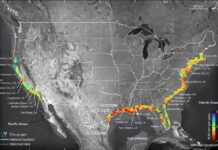The Long-Term Effects of Irma and Harvey
By Garrett Speller
As hurricanes continue to devastate the southeast, far beyond the path of the storm’s destruction, more subtle disturbances are occurring across the country and the world. Already, gas prices have noticeably risen (up 30-40 cents in some locations), as refineries hit by flooding from Hurricane Harvey shut down.
However, there are other wide ranging effects of the hurricane that are not as obvious, but are equally as devastating. For instance, jobless claims have surged upwards by 62,000, (unsurprisingly, most of these claims originate within Texas) the largest increase since the aftermath of Sandy in 2012.
Additionally, Harvey alone is forecasted to take .3% off of the country’s total GDP by the end of the quarter, a small but noticeable dent in the country’s economy. While many Florida properties are well insured, to prepare for the eventuality of a hurricane, many Huston businesses were not, and since those businesses are now underwater, this represents a devastating loss for many of these people.
Airlines and other tourist businesses, such as cruises, that use huston as a hub for travel are among the worst losers, alongside restaurants such as Sonic, which was heavily invested in Texas.
Irma, too, has many wide ranging consequences. Since the hurricane has ruined many Florida farms and groves, the average american my find himself paying more money for groceries, especially fresh produce. Bank of America estimates that 1.2 billion dollars worth of crops in florida are threatened by Irma.
Reinsurers will also be taking a hit, and even before the storm made landfall, stocks for top reinsuring companies fell over the past few days.
However, every cloud has a silver lining, as New York fed president William Dudley points out, saying “The long-run effect of these disasters unfortunately is it actually lifts economic activity because you have to rebuild all the things that have been damaged by the storms.” The auto industry is expected to boom, as people whose cars were irreparably damaged will buy new ones. Home-Improvement stores, such as Home Depot and Lowes, are expected to do well, as those affected by the storms rebuild. Some economists are forecasting general long term growth of levels slightly higher than predicted levels before the storm, as more money is spent on relief and reconstruction.
Other (more conservative) opinions say that no real economic growth will occur, and these estimates are falling into the trap of the “Broken Window Fallacy”: Essentially, if a vandal breaks a Baker’s window, and the baker hires a repairman to fix it, no real growth is occurring because the money that the baker spent on the window would have been spent on something else for his business anyway, so no growth has actually occurred.” That is to say, that now spent on reconstruction would have been spent on economic growth in other forms.
The destruction caused by the storms is not over, and reconstruction has not yet begun, but these long-term and wide-ranging effects have begun to pop up, and will continue to do so long after the storm clouds have parted.









